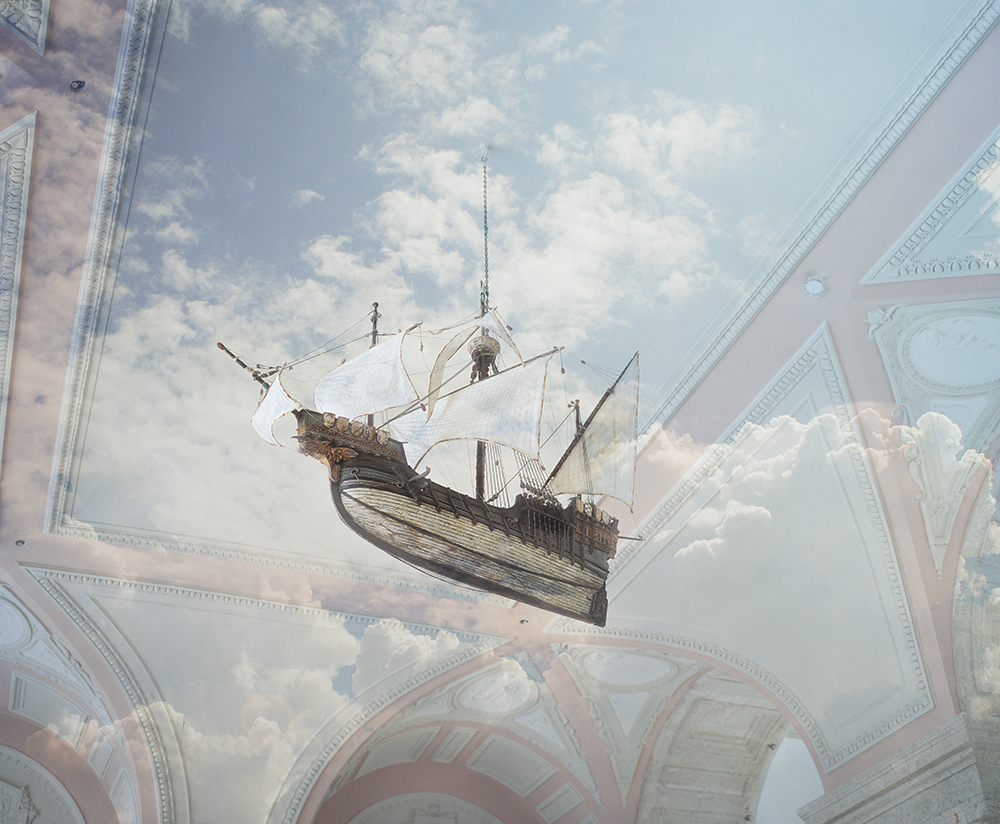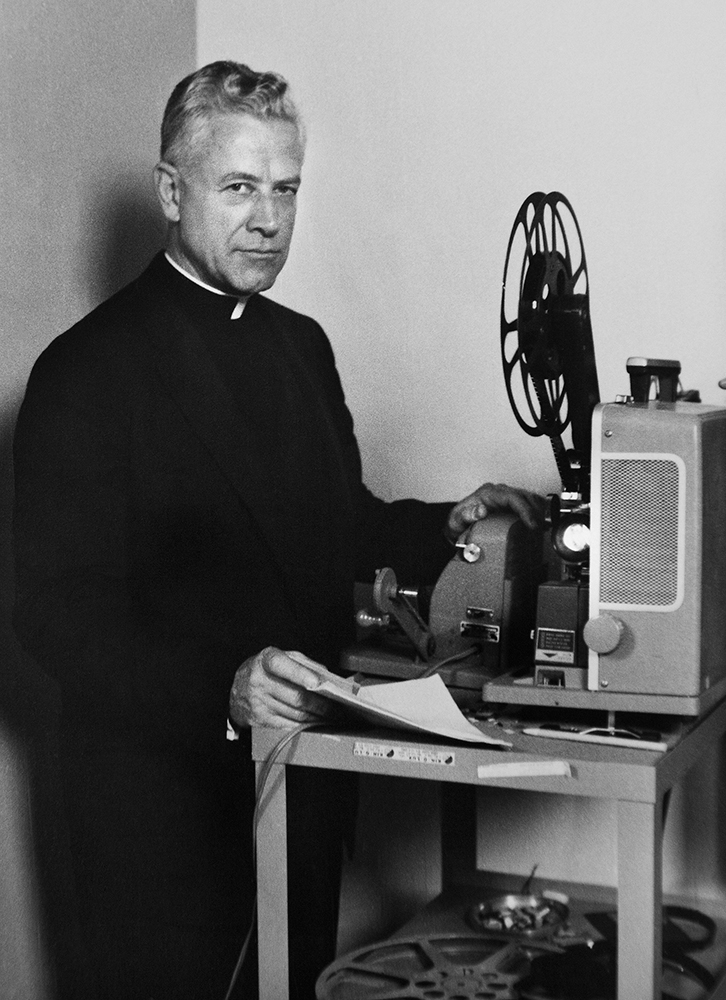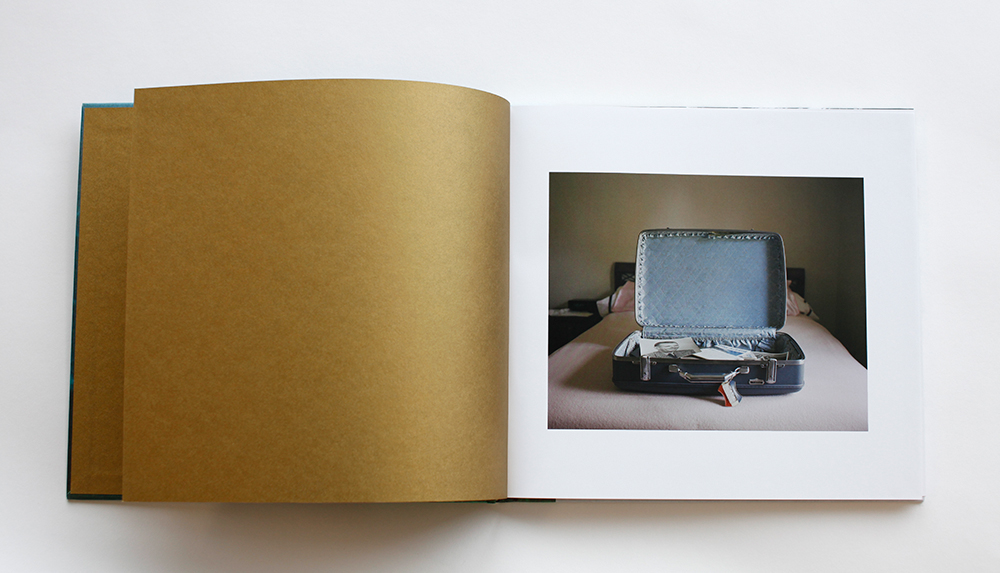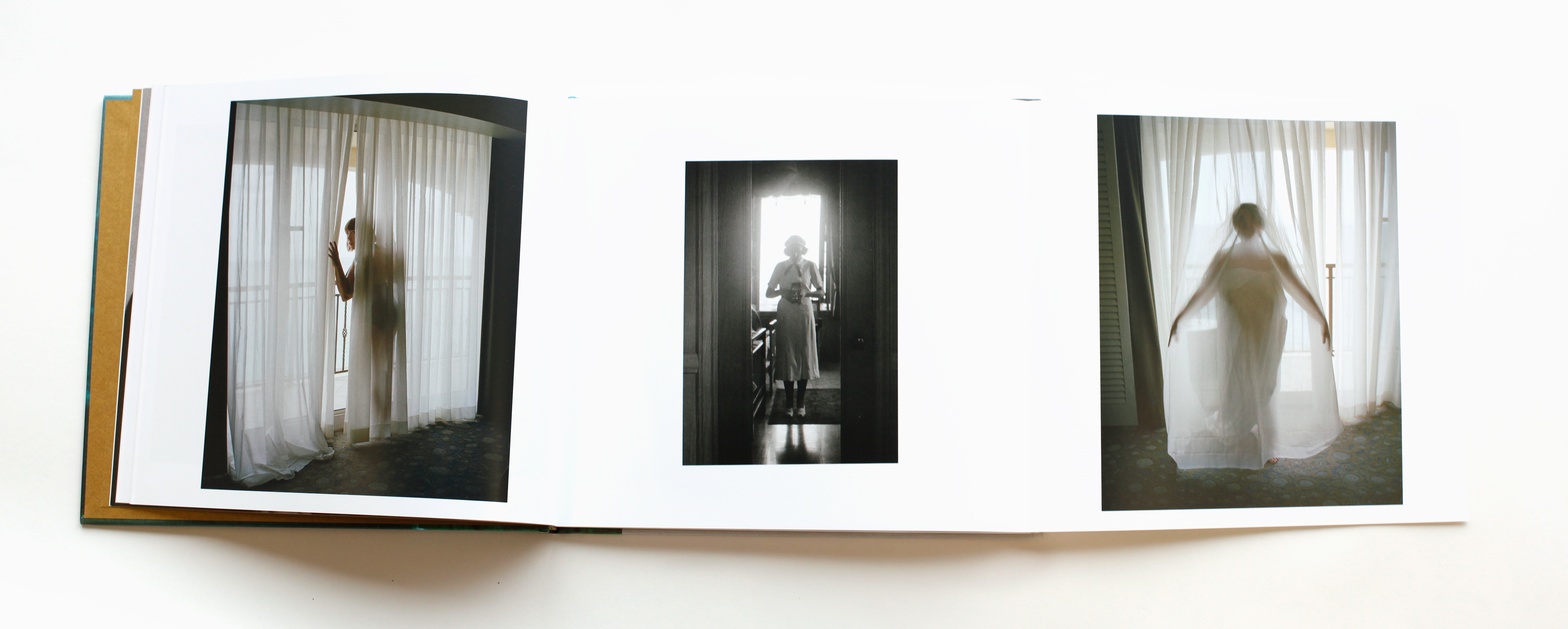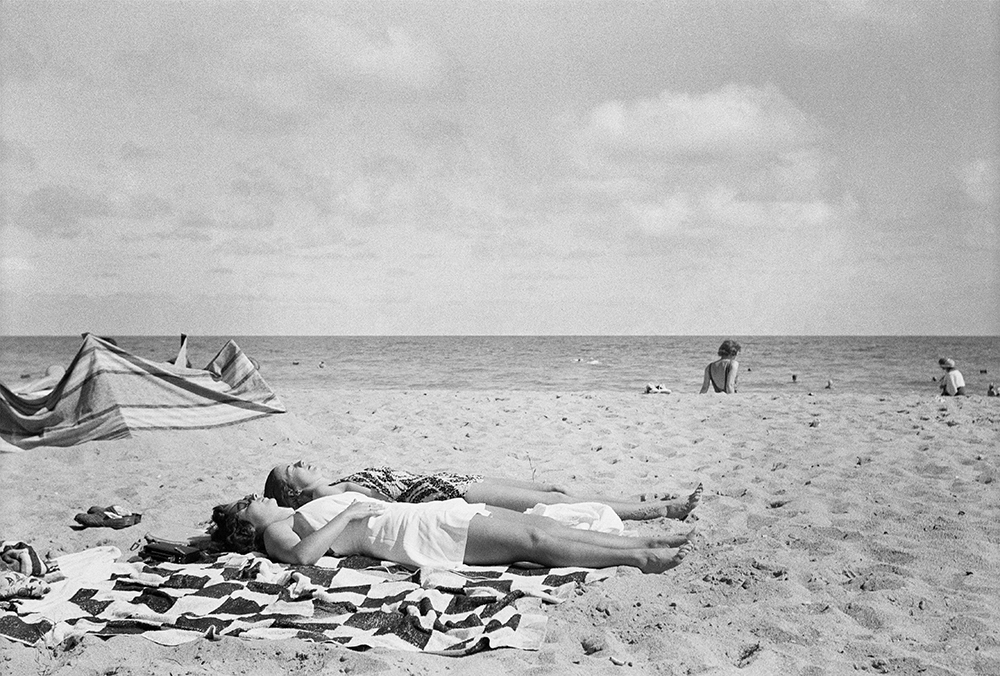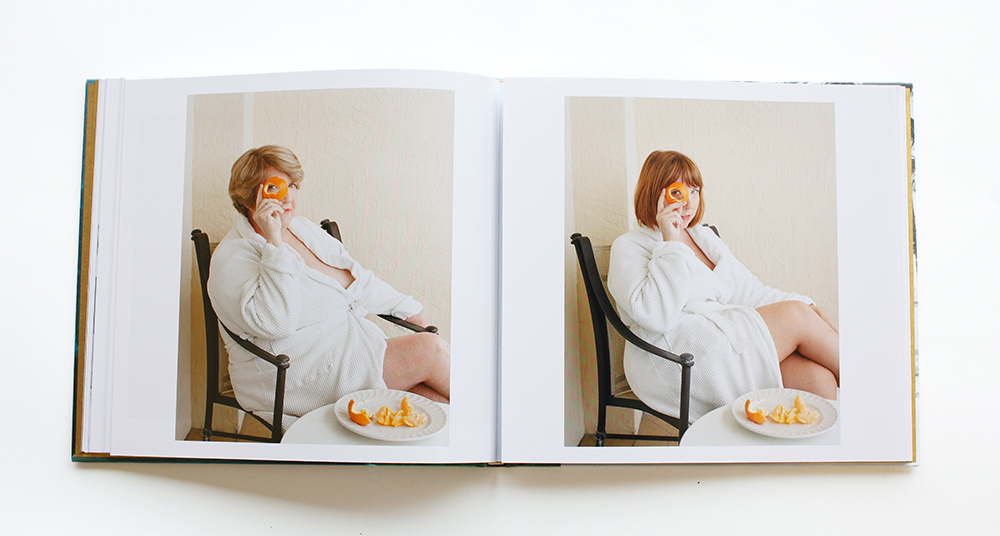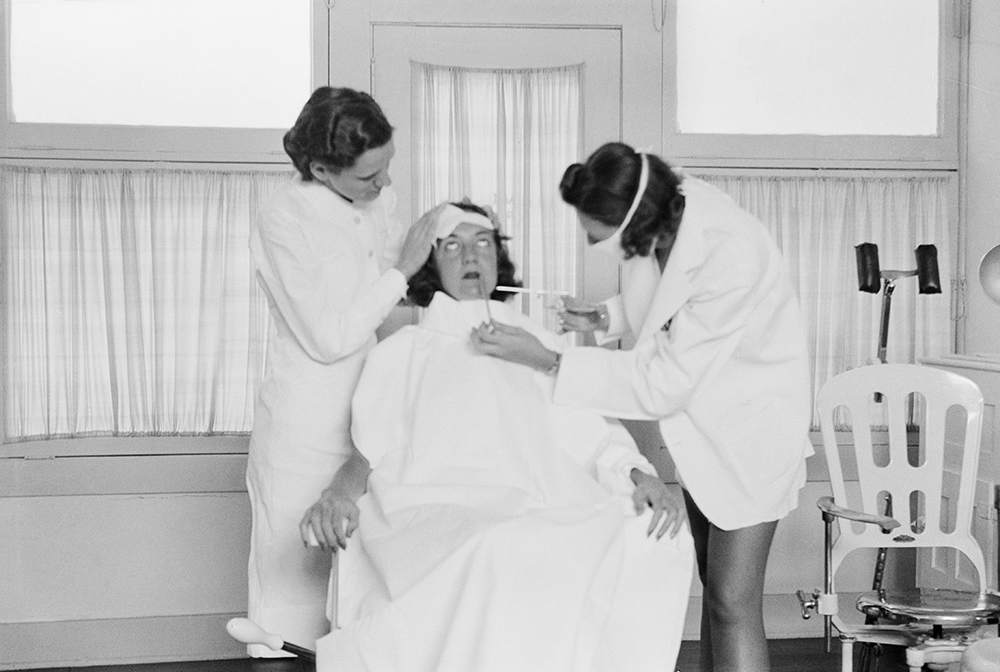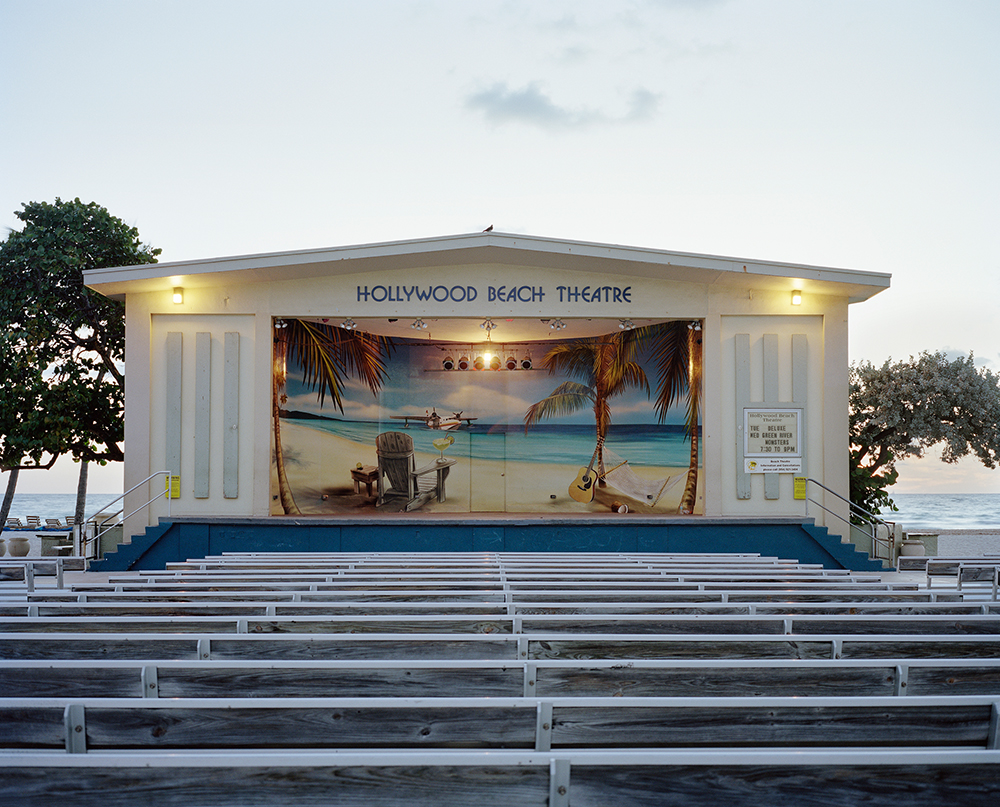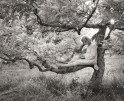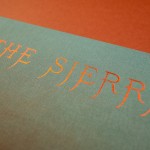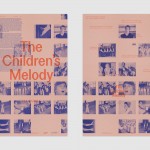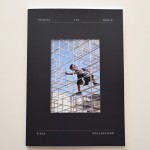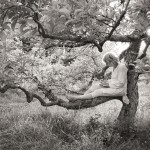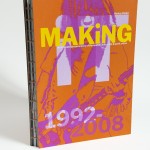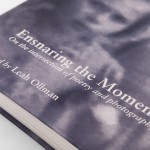Sara Macel: What Did the Deep Sea Say
I have always been a fan of Sara Macel’s photographs and projects. I coveted her Kiss and Tell book until some light fingered person squirled it away from me. I’ve shared the work from What Did the Deep Sea Say in my classes for the last several years. Her compelling crafting of a hidden family mystery that uses new capture, family photos and archival artifacts to draw the audience into an amazing piece of storytelling. On Nov. 11, 2022 at 5pm ET (17:00) Sara will be at PARIS PHOTO for a book signing event for What Did the Deep Sea Say at the Kehrer Verlag booth SE 20 in the Book Sector, located near the back entrance of the Grand Palais Éphémère (facing the Eiffel Tower).
Thomas Holton and Sara will be having a joint book signing and Q&A event at Launch Photo Books at Foley Gallery on the evening of Thurs, 12/15/22. Following a short talk about their work, PhotoPhlo founder Matthew Baum will moderate a Q&A followed by a book signing and reception.
You can purchase What Did the Deep Sea Say on Sara’s site here.
Sara Macel is an artist and photographer based in Queens, NY. Her photographic work is narratively-based and often deals with themes of the archive, family, memory, place and time. Macel’s work has been internationally exhibited and is in various private collections, including the Museum of Fine Arts Houston, Cleveland Museum of Art, Harry Ransom Center, and the Center for Photography at Woodstock. Macel is a recipient of the Individual Photographer’s Fellowship Grant from the Aaron Siskind Foundation and was an artist-in-residence at Light Work in Syracuse, NY in 2017. Macel lectures around the country at academic and cultural institutions including New York University, Syracuse University, University of Houston, Point Park University, Brooklyn Information & Culture (BRIC), Baxter Street at the Camera Club of New York, Photoville, PHOTOPLUS Expo, and the Houston Center for Photography.
Follow Sara Macel on Instagram: @saramacel
Follow Kehrer Verlag on Instagram: @kehrerverlag
Ashlyn Davis Burns, Co-Founder of Assembly, shares:
I first wrote about Sara Macel’s project, What Did the Deep Sea Say, for Light Work’s annual Contact Sheet publication in 2018. At the time, I was the Executive Director and Curator of Houston Center for Photography, Sara was an artist in residence at Light Work, and Shane Lavalette was the Director of Light Work. All our work brought us together to support the continued creation and ultimate publication of a family archive of photographs that Sara investigated and contextualized through her own large format images during what was-to-become known as the “me too” movement. There is a prescientness to her work as well as a continuance of the many moments in history in which women have continued to march towards an audible, authentic voice—the right to vote, the right to own property, the list could go on. Never could we have foreseen that in 2022 the three of us would work together again to introduce this work that began as decades-old family negatives, became a well-respected body of work in the “fine art photography” community, would then be published by esteemed publisher, Kehrer Verlag, and then released by Shane and I (who together have co-founded Assembly) as non fungible tokens on the blockchain. While our lives as women have been constantly challenged and also propelled forward through various technologies, we also see how the medium of photography itself can change over time from one form to another, yet at its core, it remains the same. It is a vehicle of telling stories, both old and new, of challenging us to view the past and the present in a new way, and of bringing us ultimately closer to our very nuanced human experience, no matter what form it takes. The following excerpt is from that originally-published essay in Contact Sheet and the interview that follows is a loose transcript from the Twitter Space discussion Shane and Sara had upon the release of this work on the Assembly Curated blockchain platform in the summer of 2022.
Follow Assembly Projects on Instagram: @assemblyprojects
In What Did the Deep Sea Say, Sara Macel’s project about the discovery of her grandmother Carolyn’s hidden suitcase of photographs and unprinted negatives from a time in her life her family knew nothing about—her life before she married. It is an intimate archive of self-portraits, photographs of trips to the beach, twin beds pressed together, and of a recurring man, someone we can only assume, through his piercing gaze and tender smile, that she loved. The fact that this part of her life was thoroughly documented but never shared with her immediate family emphasizes one of the many sides of this silence we experience as women. At the very least Carolyn saw no value in printing or sharing the photographs and at worst she may have feared their repercussions, but Macel, keenly aware of this duality, disagrees. She understands that this project is not only about Carolyn’s past life; it’s about how that secrecy shapes the lives of those closest to us, and how it is passed down generation after generation.
As the title suggests, the water becomes a hiding place and a keeper of this story, occasionally washingaway but persistently reminding us that it exists, even if only in the deepest places. Like the hotel curtains Macel and her mother look out behind, the water is a veil that stands between the truth we live and the truth we present—a deceptive and even protective symbol of our status as women. It also hints at the erasure and invisibility of women after they complete their child-rearing years. We’re consistently reminded of this in the images of her mother covering her eyes, or looking through objects. There is a loneliness to being a woman when the prescribed “woman’s work” is done. Macel’s project, however—taking on the archive and putting it into conversation with her mother’s life and her own—is a task of so much possibility. Like Macel’s photographs, her grandmother’s are expertly composed and even experimental. They go beyond a simple snapshot; they are important reflections on a part of her life she seems to know she will have to leave behind.
One of the most compelling of Carolyn’s photographs is a double exposure of a woman who is split in two by a second composition, this one vertical, of a young boy standing in front of a dirt road. While it obscures the identity of the woman as well as the child, it reveals, even if only by haunting coincidence, the double exposed nature of her life. She is never just alone, smiling in front of the stucco home and manicured lawn. From the center of her body, a path radiates outward, and around her appears the figure of a child. It’s as if the photograph alludes to the choice she will make to become a wife and a mother, and literally illustrates how that will ultimately obscure her own perception of self, rendering it nearly illegible.
Where does that leave Macel? Through her self-portraits floating in a motel pool or running into the waves, she shows us her own, forceful agency and that she understands now, more than ever, the deliberate and powerful nature of her choices. She chooses to tell the story. What Did the Deep Sea Say reminds us that we have a lot of work to do—and we always will. There are many archives to uncover and many stories that were recorded but never told. Macel is at the forefront of a growing number of young photographers and historians excavating these photographic histories and allowing us to understand ourselves and the cultural implications of the medium in new ways. She asks the waters to rush forth. – Ashlyn Davis
Shane Lavalette: “What Did the Deep Sea Say” brings together your own medium-format color film photographs, with archival family snapshots, and portraits of your mother, grandmother, and yourself. I have to ask, how did you come across your grandmother’s suitcase full of photographs? Did you know you’d embark on this project then and there?
Sara Macel: Her suitcase quite literally landed in my lap as I was wrapping up my last book about my father’s life as a traveling salesman (“May the Road Rise to Meet You”) and looking for a new project to dive into. My uncle found it in his basement and saw that it was full of family snapshots she had taken and asked me to archive them. Underneath the piles of typical family photographs of birthdays, holidays, dogs, and my mother and her siblings in their Sunday best were envelopes of old black and white negatives. In them, I saw young women in bathing suits, shirtless men, and palm trees. None of it matched the landscape of New Jersey where she lived or the woman I knew her to be before her death. As soon as I began scanning the old negatives, I recognized the handsome man on the beach to be our family priest when he was in his twenties. The way she photographed him and how youthful and happy she looked in these images got me thinking about who she used to be, who she might have desired, and on a bigger scale, what stories do we, as women, share and what stories do we keep to ourselves.
Looking back, I’m surprised that her suitcase alone was the catalyst to beginning my research, jumping on the first of many planes to Hollywood, Florida, and starting what would become a body of work that spanned six years of my life.
SL: We all have family secrets, whether we know them or not. Photography itself has truths and fictions lurking under the surface. Can you talk a bit about this and how your approach exploring this with your work?
SM: I’ve always loved that Diane Arbus quote: “A picture is a secret about a secret, the more it tells you the less you know.” Perhaps it’s because I’m often traveling alone when I’m making photographs or using photography to delve into the murky past. Working on this project, there were times I felt that I embodied the energy of my grandmother as a woman away from home having her own private adventures, but at other times I took on the part of the detective on the hunt for clues.
Photographs depict the light that entered the lens during a sliver of time, but they edit out the world beyond the frame. They only tell us part of the story. I’ve found the same can be said for most family histories. With “What Did the Deep Sea Say,” I wanted to explore that idea.
SL: OK, so… Florida. Not a question, just a statement. The same way I find the desert to be a surreal landscape where strange and magical things can emerge in images, I think Florida is, strangely enough, a space like that. Can you describe the seaside town of Hollywood, FL and how this landscape informed your image-making? I like places that seem, as we say, “lost in time” — interesting too, because your work really spans time.
SM: Florida is such a unique and weird place. I spent my childhood visiting my other grandmother in Jupiter, FL every summer. As a kid, I loved to joke that we were going to outer space, and in some ways that still rings true. Florida is a place you can disappear, for better or worse. And you can’t escape the pastel color palette of the architecture and the sunsets. I wanted to treat Hollywood as this empty stage where my grandmother’s story, my mother’s story, and my own story could play out. So, out of necessity, I found it best to photograph in the early morning hours as the sun was coming up and late in the day into night. Hollywood has undergone a lot of changes in the past few years and become more commercialized with the arrival of garish mega-resorts like Margaritaville and Trump Hollywood. I was able to photograph literally just before this shift, so a lot of the motels and attractions on the boardwalk appear like relics of the past, which added to the feel of us walking in each other’s footsteps and repeating generational pattern.
SL: I’d love to hear more about your relationship to your mother and what the process of making images with her is like? Do you see these as collaborative performances? How does she see your work?
SM: Photographing my mother was the most satisfying collaborative experience of my creative life. She was game for anything, and because we are so close, I could be very honest with her about my intentions and curiosities. As women age, they become invisible in our society. I wanted her to feel seen as the complex woman she is and have a creative say in how she was photographed. Working together and seeing her through the lens informed my self-portraits and how our images interweave with my grandmother’s. We found a way to communicate through photographs. It felt like Hollywood became a secret meeting place for us to have conversations we never had when my grandmother was alive.
SL: “What Did the Deep Sea Say” is about to be released as a book with Kehrer Verlag. Can you talk about how bringing all these various threads together works in book form? And speaking of secrets and the layering that exists within photographs of what we see and do not see, I think some of the pages in the book are designed as gatefolds, so the reader can open them up to discover “hidden” images along the way?
SM: The book takes viewers back and forth through time and space as you move through the narrative. Everyone at Kehrer Verlag is a dream to work with. I was very fortunate to find such a talented and intuitive partner in designer Nick Antonich. When we began working together, I floated the idea of the fold-outs which essentially create triptychs within the sequence, which function to reveal something hidden or secret, like my mother’s affair on this same beach in 1970 which she neglected to tell me until we’d been working on this project for four years!
SL: What are you working on now? What might we expect to see next?
SM: My new work is related to marriage, fertility, and pregnancy. With this work, I’m stepping outside my comfort zone by working with new sources of archival images. I’m also making cyanotypes from my iPhone, which I began making during COVID.
Both in how I am making the work and what the work is about, I’m adapting to what life throws at me. I find that so much goes unspoken about in those areas of life, and photography is a perfect medium to say so much without saying a word.
Posts on Lenscratch may not be reproduced without the permission of the Lenscratch staff and the photographer.
Recommended
-
Aaron Rothman: The SierraDecember 18th, 2025
-
Eli Durst: The Children’s MelodyDecember 15th, 2025
-
Kinga Owczennikow: Framing the WorldDecember 7th, 2025
-
Richard Renaldi: Billions ServedDecember 6th, 2025
-
Ellen Harasimowicz and Linda Hoffman: In the OrchardDecember 5th, 2025


